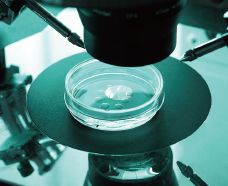HCPs are cellular structural and secretory proteins produced during cell culture process. It's reported that HCPs can stimulate the human immune system, triggering allergic reactions or other adverse responses. Besides, HCPs may induce the production of antibodies against protein drugs in the body, affecting the therapeutic effects of the drugs.
Global pharmacopoeias and drug quality supervision agencies have issued the requirements for detecting HCPs residue.
Chinese Pharmacopoeia indicates that HCPs residue should be less than 500 ppm of the total protein volume. In China, the Pharmacopoeia specifies clear requirements for the residue of host DNA and HCPs in Chinese hamster ovary (CHO) cells,
African green monkey kidney (vero) cells, human embryonic kidney (293T) cells, bacterial proteins in yeast and Escherichia coli, ovalbumin etc.
HCPs Detection Method
There are various HCPs, e.g. over 477(even 1000) CHO cell proteins. Currently, components of residual HCP in biological products can’t be completely identified. On the one hand, residual HCP level is very low(usually ng/ml). Minute amounts of components have been beyond the detection range. On the other hand, different production technologies also result in different HCP pollution. Thus, currently, only the total residual content of HCP can be relatively quantified, ensuring the acceptable level and quality control. Traditional HCP detection methods include counter immunoelectrophoresis(CIE), SDS-PAGE, western blot, 2-dimensional gel electrophoresis, ELISA and high performance liquid chromatography(HPLC) etc. ELISA is used for residual HCP detection in Chinese pharmacopoeia.
01 ELISA:
Widely used residual HCP detection method. Sandwich ELISA is featured with good repeatability, high efficiency, easy operation, wide applications etc. The sensitivity can reach to 0.5ng/ml, which is 200 times higher than CIE. Currently, it has been the recognized detection method for residual HCP.
02 Electrophoresis:
Analyse protein qualitatively and semi-quantitatively. Early detection method for residual ovalbumin in influenza vaccine in China. This method has short reaction time and high sensitivity but disadvantages are low resolution ratio and lack of accurate quantification for detected item.
03 HPLC and other methods:
HPLC is featured with high resolution ratio, high sensitivity, automated operation, less sample and accurate quantification. Disadvantages: if the concentration of impure proteins in the tested sample is higher, the high peak value can cover some low values or protein existing site, resulting in the incomplete separation detection for low concentration of HCP. Besides, less sample loading makes some lower content of HCP components undetectable. Liquid chromatography together with electrospray ionization mass spectrometry (ESI-MS) can save protein components better, and help to identification and analysis of simple protein sample components.

